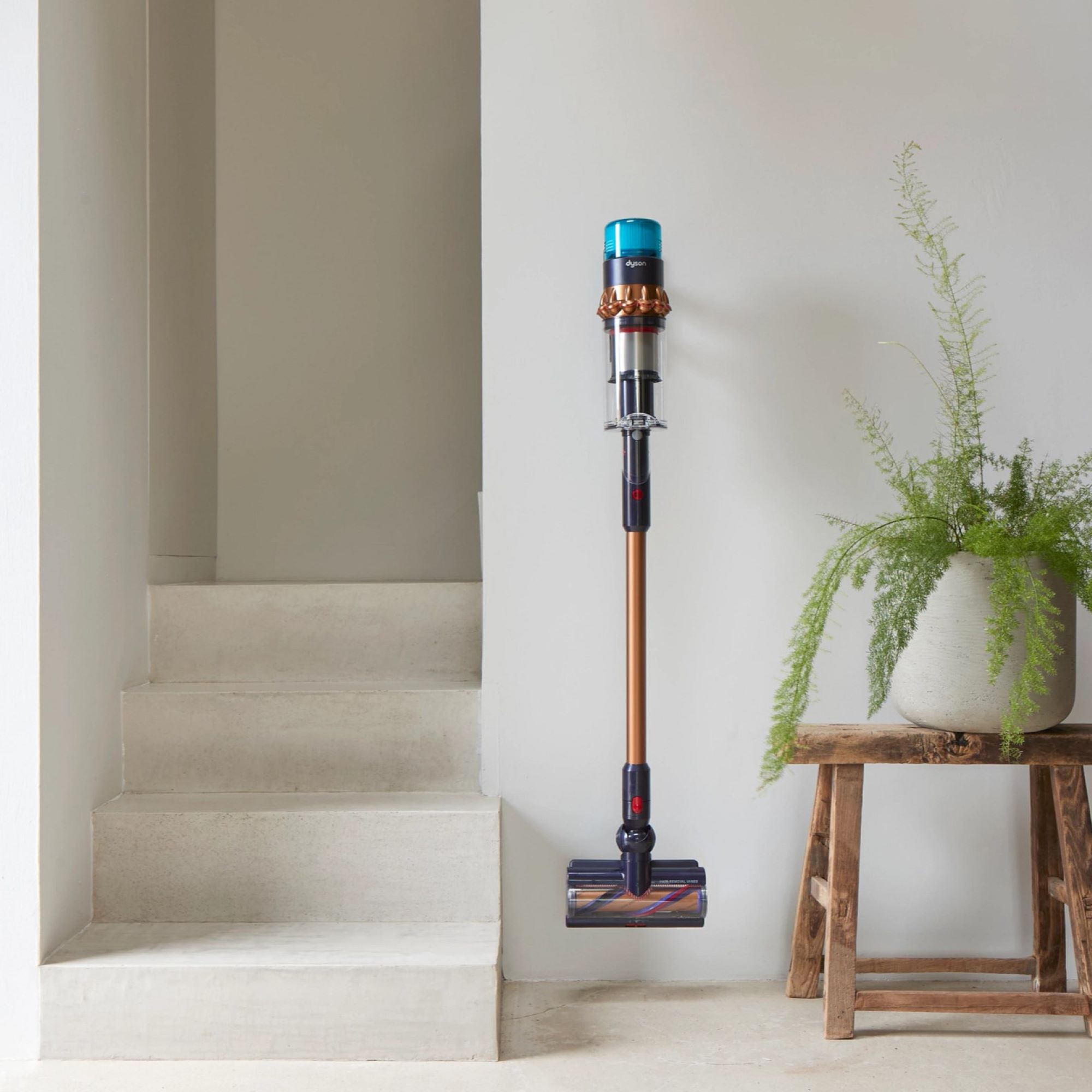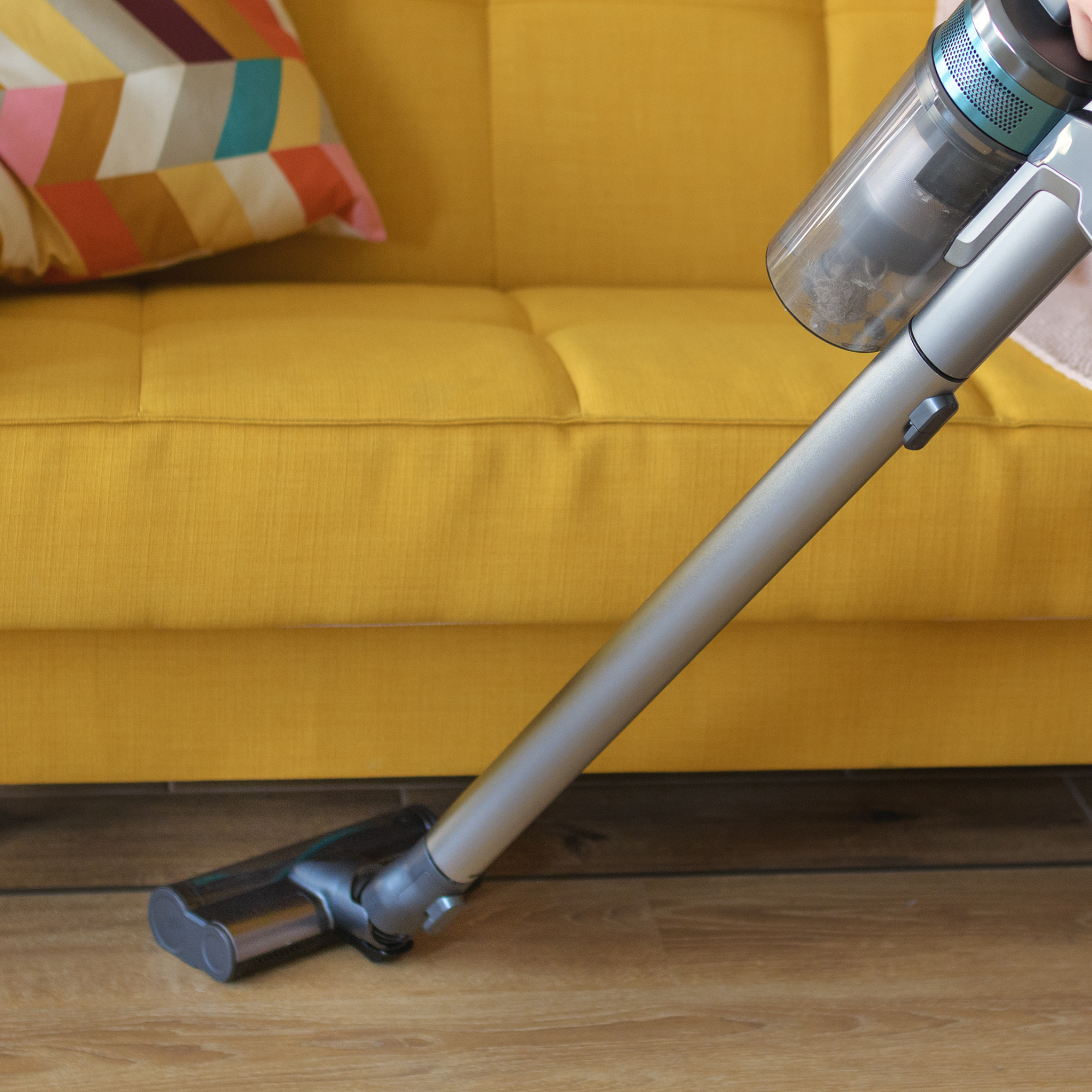How to get rid of an old vacuum cleaner - 3 easy methods to choose from, depending on the state of your machine
Dispose of your old vacuum responsibly and with little faff


When our trusty vacuums reach the end of their lifespan, it's tricky to know what to do with them, and in a lot of homes, they can end up sitting there for months on end. Fortunately, knowing how to get rid of an old vacuum cleaner can be really simple - once you know the best options available to you.
Even the best vacuum cleaners will sadly reach a point where they're no longer suitable for purpose. If you've been noticing signs that it's time to replace your vacuum, you'll want to know what to do with it next. After all, it can't just be thrown away as general household waste (and nor should it be, for environmental purposes).
We've asked the experts to share the best way to get rid of an old vacuum, so if you're looking to shift a cordless vacuum or a traditional plug-in, consider one of these three options to clear it from your home.

1. Donate or sell
The best way to get rid of an old vacuum cleaner really depends on what state the device is in. If it's a little outdated but still works fine, the experts recommend donating it to a local charity shop. Even if you feel you've outgrown it, someone else could really benefit from getting a second-hand vacuum at a discounted price. Donating it to charity also supports a good cause.
If your vacuum has lost suction power, it might still be worth donating. 'Slightly faulty vacuums are sometimes bought by others for the parts,' Isabella Forgione, Vacuum Cleaner Expert at AO.com explains. 'Or, someone might be able to repair the vacuum themselves.'
It can be worth also trying to sell your old vacuum cleaner on second-hand websites like eBay, Gumtree, and Facebook Marketplace. Just be clear in the product description about the state of the vacuum - someone may still want to buy it for the parts.
2. Use a recycling scheme
If your vacuum has stopped working completely, there are several recycling options to consider. 'Recycling is a great option, as many local recycling centres accept vacuums and can process components like hoses, cords, and plastics,' says Sophie Lane, Product Training Manager, Miele GB.
Sign up to our newsletter for style inspiration, real homes, project and garden advice and shopping know-how
Your local recycling centre (or tip) will probably accept your old vacuum. 'Most tips will have their council-run recycling centres which can accept electrical appliances as part of their WEEE (Waste Electrical and Electronic Equipment) programmes,' Isabella from AO.com explains.
Before taking anything to your local recycling centre though, it's always worth double checking that they accept the item in question. You can check whether your closest centre takes vacuums via Recycle Your Electricals.
Some retailers, like John Lewis & Waitrose, also run electrical recycling programmes. You can take your old vacuum to any John Lewis or Waitrose store and they'll recycle it for you, free of charge. This is pretty handy, especially if it's easier for you to get to a store than the tip.

If you're buying a new vacuum, it's worth checking whether the retailer will collect your old one for you at the same time. Currys and AO.com are just a couple of the places that do this for a variety of appliances.
'AO offers an appliance removal service that collects and recycles any electrical appliance like your old vacuum when delivering a new one,' Isabella explains. 'This makes it far easier for households and will save you time from making a trip to the tip.'
3. Scrap it
The final option for getting rid of your vacuum cleaner is to take it to a scrapyard, if this is more convenient than going to a store or recycling centre. You may be able to get some cash for your old vacuum this way, especially if it contains valuable materials like copper wiring, motors, and metals.
'Scrapyards are another option for getting rid of your vacuum, especially for metal parts,' Sophie from Miele says. 'Though you may need to disassemble the vacuum first, as some scrapyards will only want the metal rather than the vacuum itself.'
That being said, there are scrap services available that will collect your vacuum cleaner from your house, such as Scrap Metal Collection. You won't receive any money for your old vacuum, but they will collect it free of charge and take it off your hands (you don't need to faff about disassembling it either).

FAQs
Is it worth scrapping a vacuum cleaner?
It might be worth scrapping a vacuum cleaner, if there are valuable metal parts inside. However, these need to remain intact, which can be tricky if your disassembling it on your own.
'Scrapping your old vacuum can be worthwhile if you’re trying to collect specific materials to sell,' Isabelle Forgione says. 'However, this is limited by the small amounts of valuable metals and plastics in your vacuum, and the return is usually minimal unless you can extract components like your motor in perfect condition.'
If you'd rather your vacuum be scraped than recycled, and can't make it to a scrap yard, you can usually find free collection options online.
Does Dyson recycle old vacuums?
Dyson vacuums tend to have a pretty long shelf life, but they will need replacing eventually.
'If your vacuum cannot be repaired by our support team, Dyson products can be responsibly recycled at centres that accept WEEE waste,' a Dyson spokesperson said. 'Further information, alongside recycling machines at Dyson Demo Stores, can be found on our website.'
When buying a new Dyson vacuum, you can recycle your old one within 28 days of purchase at one of the Dyson Demo Stores. You can find out more about Dyson's recycling scheme here.
Our vacuum recommendations
If you're thinking about getting rid of your old vacuum, you might also be choosing a new one to replace it. We've tried and tested loads of vacuum cleaners and these three models scored highly in our in-house tests.

Rated the best for most in our vacuum cleaner buying guide, the Shark Stratos received full marks in our dedicated review. It auto-detects the suction power that's needed, giving it great pick-up no matter the surface. The anti-odour capsules are an added bonus that will leave your home smelling fresh.

If you've got furry friends in the house, we recommend the Halo Capsule X, which was designed with picking up pet hair in mind. It picks up even the most stubborn bits of fluff, and it has a generous bin capacity of 2L - handy for those of who don't want to feel like they are constantly emptying it.

Katie has been writing freelance since early 2022, specialising in all things homes and gardens, following achieving a Masters in Media and Journalism. She started out writing e-commerce content for several of Future’s interior titles, including Real Homes, Gardeningetc, Livingetc, and Homes and Gardens. Since then she’s been a regular contributor on Ideal Home’s digital team, covering news topics, how-to guides, and product reviews.
